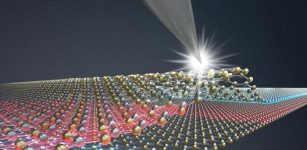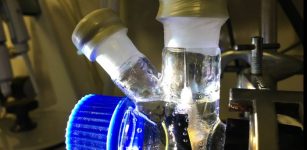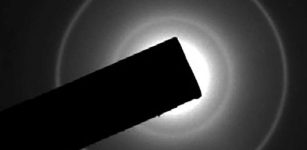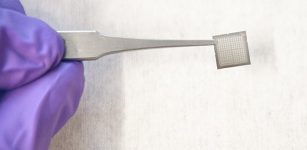An Invisible Coating To Make Wood ‘Fireproof’
Eddie Gonzales Jr. – MessageToEagle.com – An invisible coating that can “fireproof” wood has been invented by scientists at Nanyang Technological University, Singapore (NTU Singapore).
With the popularity of mass engineered timber growing in the construction industry, one of the biggest challenges for wood is its flammability. When untreated, wood or timber can burn and combust easily.
Uncoated timber burns and cracks when exposed to fire while coated timber (right) has a layer of char that is activated by fire, and protects the timber underneath, preventing the wood underneath from burning. Credit: NTU Singapore
For instance, in the Great Fire of London of 1666, a large part of central London was burnt down as timber constituted a major part in construction of buildings. Today, most buildings are built using a combination of steel, concrete and glass, all of which are relatively less susceptible to fire.
Over the last decade, mass engineered timber is gaining popularity due to lower costs and faster construction, which sees productivity gains of up to 35 percent. If the wood is harvested from sustainably managed forests, it also has a lower carbon footprint when compared to steel or concrete buildings.
Current practices to protect the interior of wooden buildings from fires require the use of fire-retardant panels (typically, gypsum and magnesia boards) or the timber has to be coated with paint-like fire-retardant coatings, both of which conceals the natural wood grain of timber.
In comparison, the new invisible coating developed by NTU allows for natural beauty of timber to shine and yet can still provide a flame barrier when “activated” by fire.
Invented by a team led by Associate Professor Aravind Dasari from the NTU School of Materials Science and Engineering, this fireproof coating is just 0.075 millimeters thick and is highly transparent, making it invisible to the naked eye.
When heated up by a hot flame, a series of complex chemical reactions happens, causing the coating to become a char that expands to more than 30 times its original thickness. This char prevents the fire from combusting the wood underneath, as shown in an accredited lab test.
“Most timber or wooden panels only have a transparent coat that protects them from moisture, weather corrosion, termites or pests, and are not designed to withstand high heat. Thus, timber can still burn very quickly, especially if it is unprotected,” explained Assoc Prof Dasari, an expert in fire-retardant materials.
“In our coating, we used technology to lock certain compounds and interact with the resin. They will actively participate in the chemical reactions in a systematic manner when exposed to high heat, thus leading to the formation of char. This char was engineered to be extremely heat-resistant, insulating the wood underneath from the high heat.”
NTU Vice President (Innovation and Entrepreneurship) Professor Louis Phee, described this innovation as a revolutionary step forward for the timber construction industry.
“Leveraging on NTU’s strengths in materials sciences and engineering, this is an example of how fundamental research can be translated into commercial applications with high impact, given that the invisible coating enhances both safety and esthetics in timber construction with few to no drawbacks,” Prof Phee said.
“Innovations like this are what NTU can offer to industry players who are keen to work with us to license, commercialize and adapt technologies that can be used to create unique products that will ensure competitiveness for Singapore in the global market.”
The NTU team is now in licensing talks with different companies. Venturer Timberwork is actively exploring the usage of this innovative coating to protect their mass engineered timber elements in one of their current projects.
Bolstering engineered timber’s resistance to fire is critical to expanding the uptake of this technology across more of the built environment, says Mr Kevin Hill, Venturer’s Managing Director.
“At Venturer, like other stakeholders in the Mass timber construction sector, we believe more new projects will look at using this new coating technology if fire resistance can be improved. It has the potential to reduce cost and reliance on other more expensive solutions, such as using thicker timber to increase charring layers, or by encapsulating the timber with fireboards, which negates the beauty of this sustainable and productive building technology.”
This new coating is expected to be in high demand by the construction industry, as timber buildings need to meet specific fire codes for buildings set by regulators.
In industry-standard tests, such as the Single Burning Item tests conducted at a third-party accreditation laboratory, the made-in-NTU coating achieved the highest class possible. When exposed to a high-temperature flame, the coating generated very little smoke and is able to prevent the flames from spreading.
When the char is scraped off, the wood underneath is still intact, proving the efficiency of the coating to protect the wood.
This is important as in a case of a fire, construction materials need to be fire retardant and relatively smoke-free to allow for the safe evacuation of occupants in a building.
The global fire-resistant coating industry is also expected to grow to US$1.06 billion market by 2029 in a recent report by Exactitude Consultancy.
Written by Eddie Gonzales Jr. – MessageToEagle.com Staff











